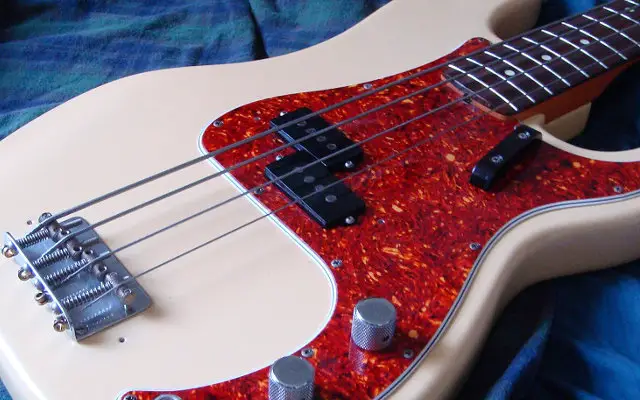One of the most important things you can do for your Fender Bass is a general setup. Unfortunately it’s also one of the most neglected things for many bassists.
If you have a serious set up issue or a major mechanical problem you should take your bass to a professional, but minor adjustments to your bass can help avoid a serious issue later on and make your bass sound and play better.
Neck
Neck adjustment is probably the one of the more intimidating tasks for a bass player. Some bassists just don’t like the idea of making any tweaks to their bass neck for fear of something going horribly wrong. Small truss rod adjustments on your bass neck shouldn’t be a big deal, they’re easy and help keep the neck straight and easier to play.
Many Fenders have the truss rod adjuster at the headstock which is more accessible than some Fender Basses that have them at the heel of the neck, accessible through the top of the body. If you have a vintage Fender or a vintage reissue Fender Bass you may have to remove the neck completely to access the truss rod adjuster at the heel of the neck.
Depending on which way the neck is bowing will determine which way you turn the truss rod. All bass necks have a slight back bow to allow some relief for the strings to clear the frets (unless you have a fretless bass).
If your neck has an up-bow you’ll want to turn the truss rod nut clockwise, which will tighten the neck and remove excessive relief. If your neck has a bad back-bow you should loosen the nut by turning it counter-clockwise. Make small adjustments with the truss rod, using quarter turn increments and then checking the neck.
- Make a mark with a pencil before you start turning so you know how far you’ve gone.
- Always loosen the nut first before you tighten it, in case the truss rod is already maxed out.
- The neck will continue to move a little after adjustment, sometimes it can take a couple of days of tweaking to get it just right.
Bridge
Bridge adjustment is an easy and effective way to maintain the correct action or string height. What height you prefer your action is entirely up to you, the key is to find it and keep it there with regular checks. With some bassists the lower the action the better, which is especially helpful for playing fast or complicated lines. Other bass players like it higher as they feel they can dig in harder and get a stronger tone without fret buzz.
Most Fender Basses have either Allen or slotted screws for adjusting the height of each string saddle. It’s common for many players to have the strings set to different heights, often adjusting them according to the curve of the fingerboard or the thickness of the string (highest for the E and lowest for the G). Other bassists like to have all the strings the same height, and some like to adjust them strictly by ear.
If your action is high and your neck is straight but you still have fret buzz issues you may have incorrectly cut slots in the nut, this should be fixed by a professional.
Pickups
Pickup height is another way to adjust the tone and overall volume of your bass. Most Fender Basses use Phillips screws to either lower or raise the pickups. The higher the pickups are the louder the tone but you have to be careful not to set them too high or the magnets can interfere with the strings or even hit them.
Some bassists believe that lower set pickups give you a better tone because the magnetic pull from the pole pieces is reduced, resulting in a cleaner and purer sound. On some basses like the Fender Precision you can set the pickup on an angle to account for string height difference.
Remember that all these adjustments need to be used in conjuction with each other. Regular setups on your bass will give you a better performing and better sounding instrument with fewer problems down the road.
